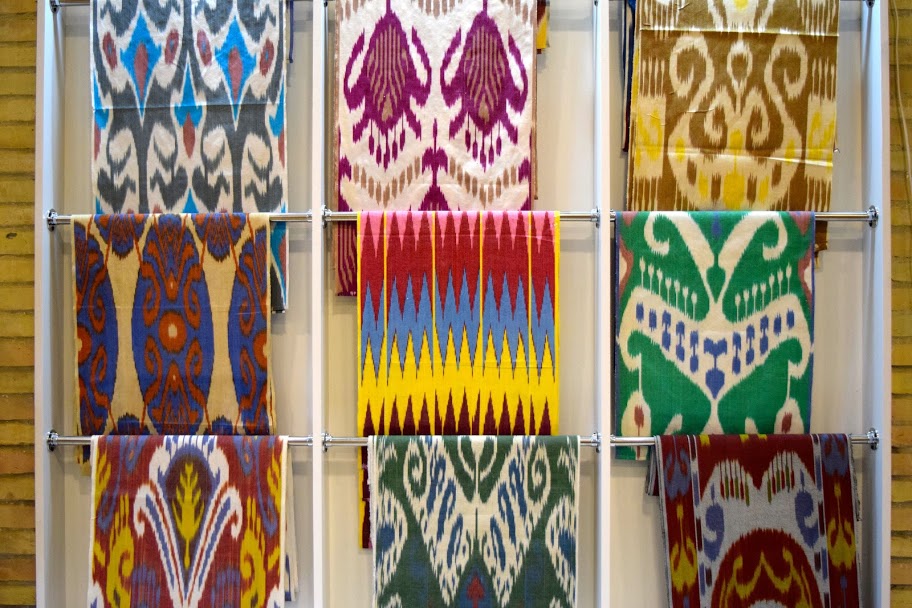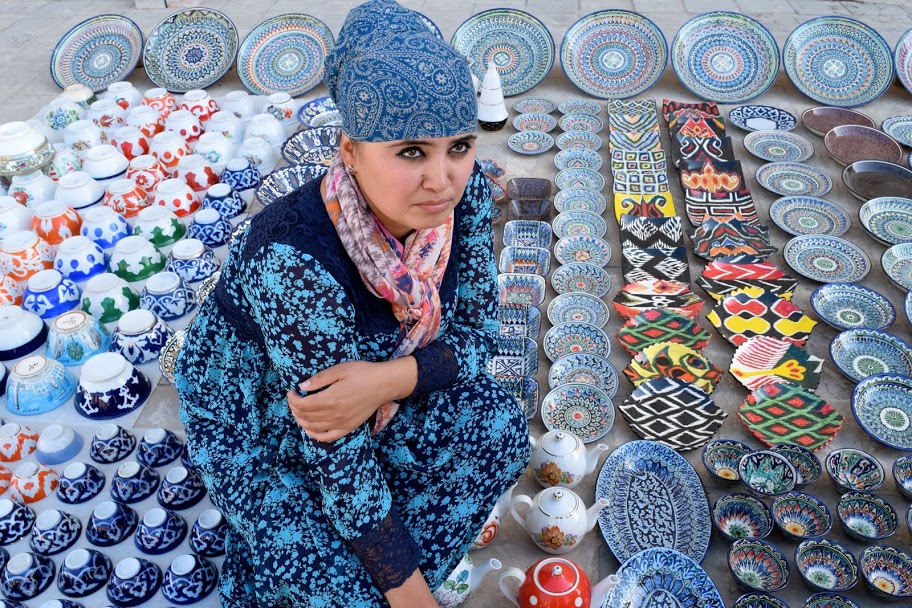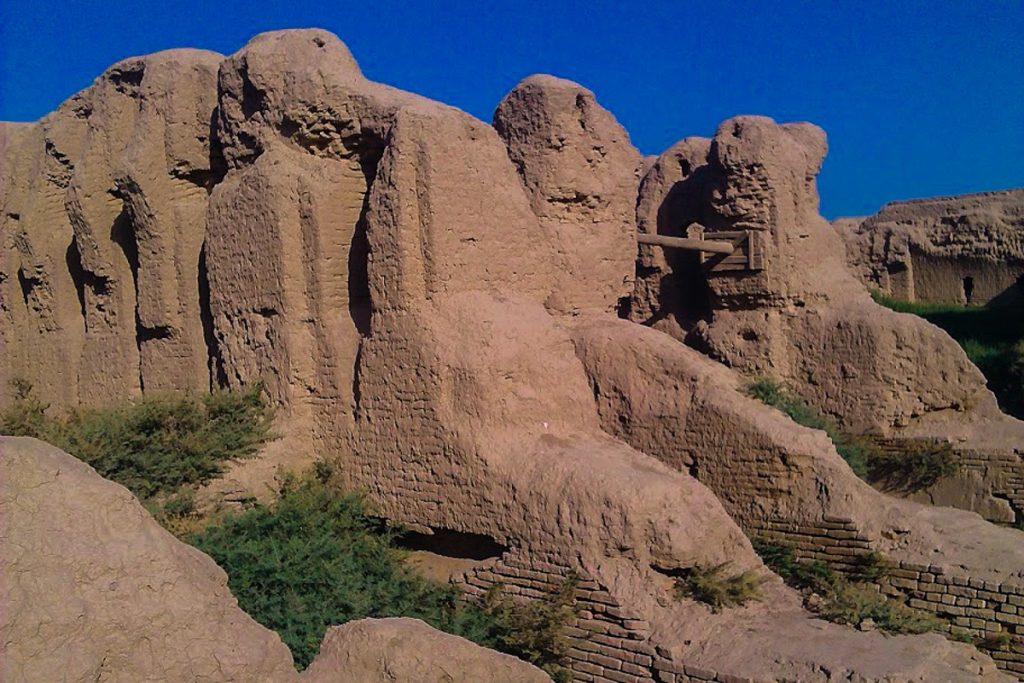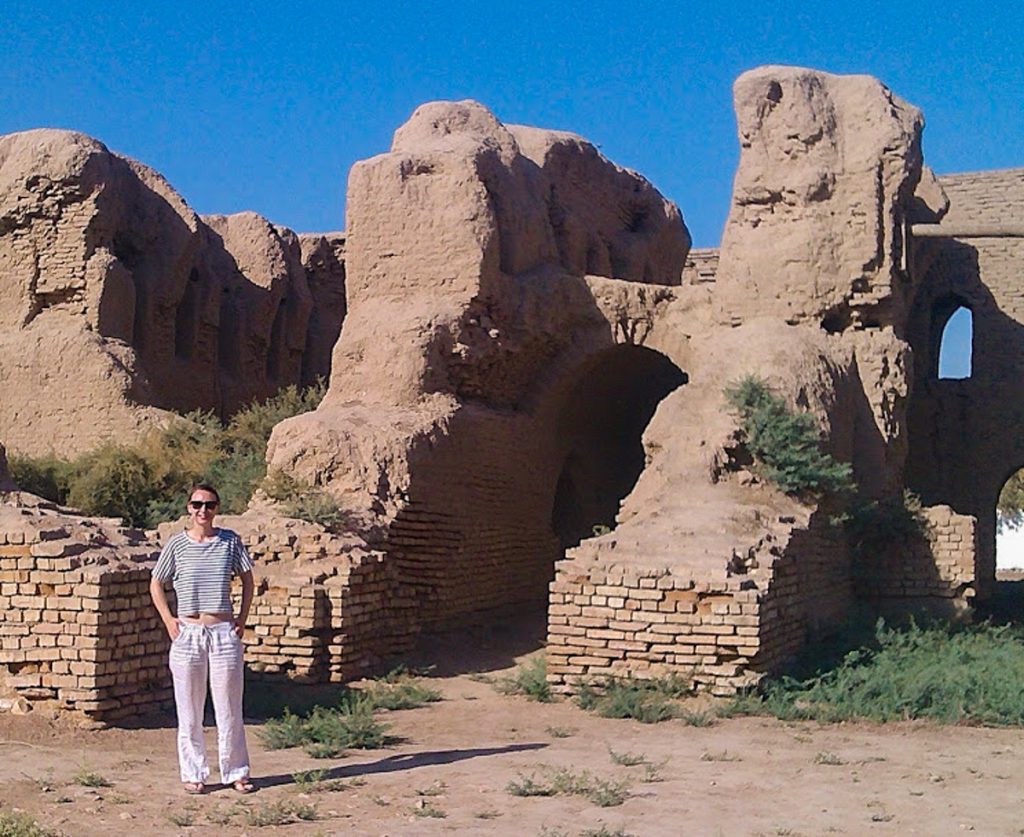Uzbekistan is the heart of the Silk Road. From camels to caravanserais, mosques to mausoleums, this is where you’ll find every Silk Road cliché. History comes alive in the UNESCO World Heritage cities and in desert oases, and you often feel like you’re experiencing places from the pages of a fairytale.
Rabati Malik
The caravanserai was the ancient version of a motel, a cheap roadside hotel where even poor travellers could afford to stay the night. They were spread at intervals a day’s walk apart along the Silk Road, and inside the walls guests sought not only a warm bed and hot meal, but also protection from bandits and wolves, and advice about the road ahead.
One of the last surviving caravanserais is Rabati Malik in Navoi. It was built in 1078, and the magnificent portal has been carefully restored. You can still see the original decorative brickwork and step inside the extensive courtyard. Merchants would have tethered their camels and donkeys in stables on the ground floor, then slept in small rooms above.
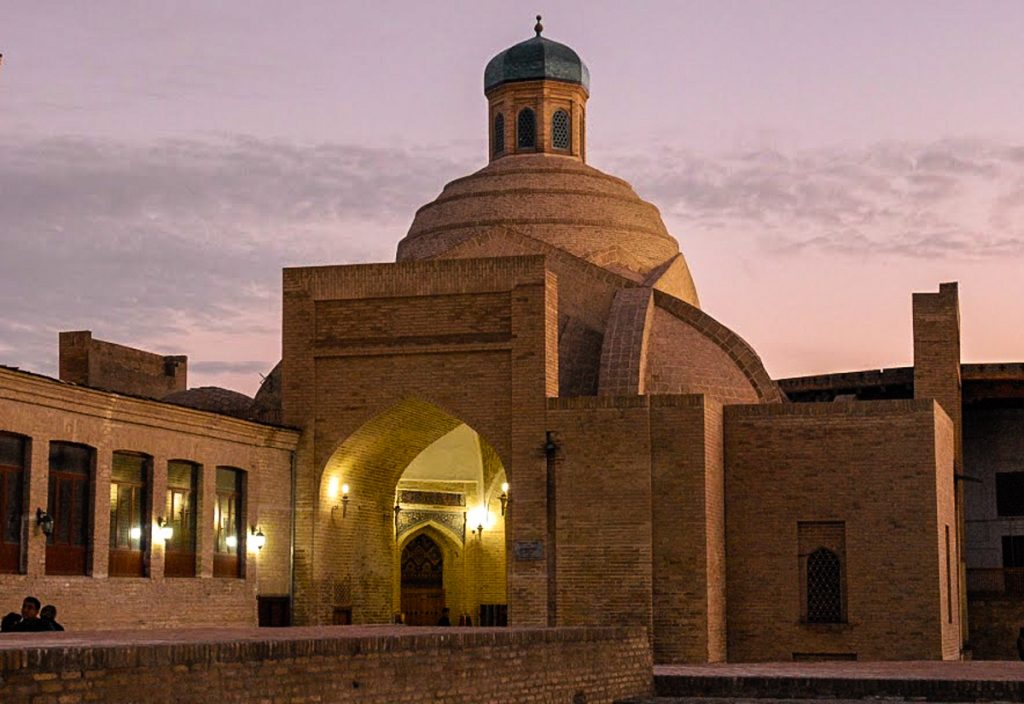 Rabati Malik ©Maximum Exposure
Rabati Malik ©Maximum Exposure
Sardoba Malik
Just across the modern highway from Rabati Malik is Sardoba Malik, a domed water reservoir. In the desert, access to safe water was the difference between life and death, so travelling merchants needed to know where there was a reliable supply.
Sardoba Malik was built at the same time as the caravanserai to hold rainwater and water from the river. The domed roof prevented the water from evaporating in the heat, and reduced the likelihood it’d get contaminated. The reservoir has been partially restored; you can descend the steps from ground level to get water, though these days it’s probably not a good idea to drink it.
 Sardoba Malik ©Maximum Exposure
Sardoba Malik ©Maximum Exposure
Chorsu Bazaar
The Silk Road was built on trade; every town of any size had to have a substantial marketplace. One of the longest established and most impressive is Chorsu Bazaar in Old Tashkent.
The tiled turquoise domes you see at Chorsu Bazaar today date from Soviet times, but apart from that very little has changed. The traders still hawk all manner of fresh produce and wares, and each area of the market is given over to a different kind of good. Come in the morning to smell the fresh bread baking, then wander through the stalls of fruits and nuts, spices, and sweets. There are plenty of snack stands selling kebabs, samsas, and other fast food treats, so it’s a cheap and delicious place to have lunch.
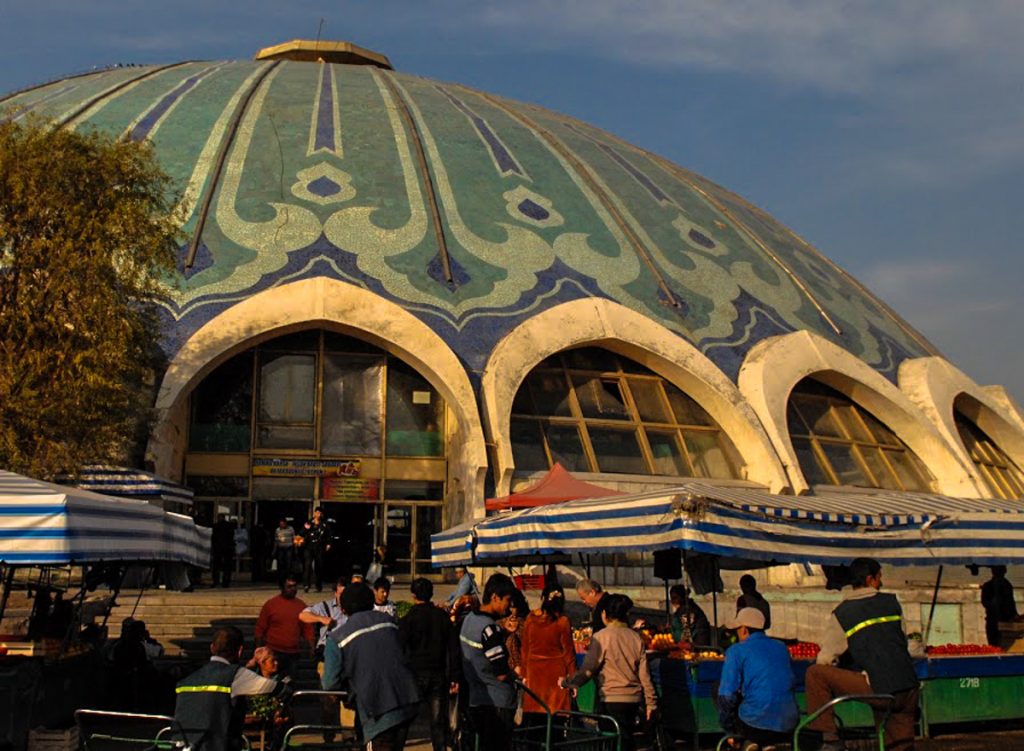 Chorsu Bazaar ©Maximum Exposure
Chorsu Bazaar ©Maximum Exposure
Trading Domes
Chorsu Bazaar is fabulous for food, but for textiles, crafts, and other such souvenirs you need to visit the trading domes of Bukhara. These iconic buildings date from medieval times, and historically each dome was home to a different kind of craftsmen, from hat makers to embroiderers.
The crafts are no longer as divided as they once were, but you can still see artisans at work. Bukhara is particularly well known for its carpet makers, silk weavers, and ceramicists, so these are the best souvenirs to buy.
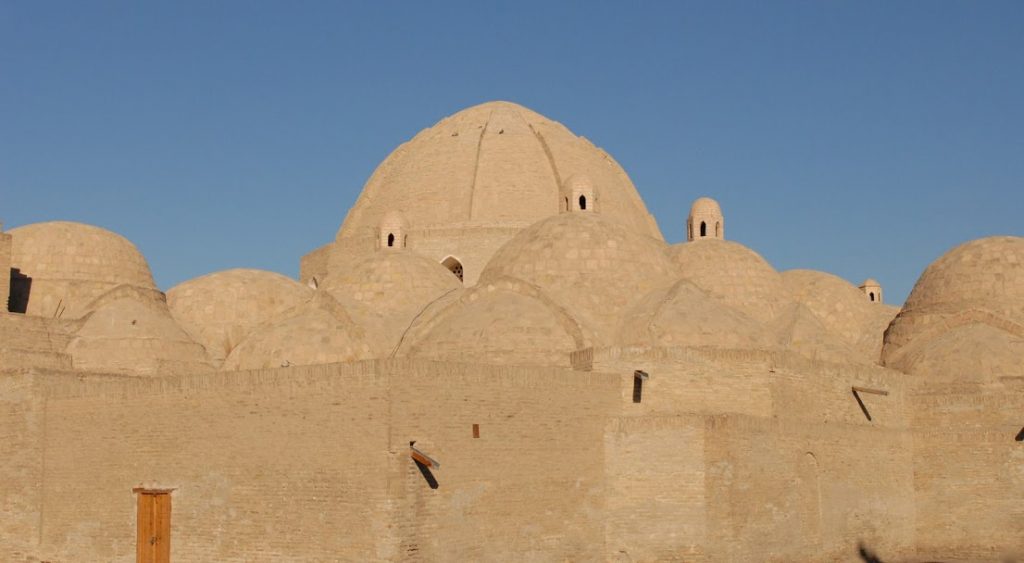 Trading Domes ©Maximum Exposure
Trading Domes ©Maximum Exposure
The Registan
Translated as “the place of sand”, the Registan square has always been the heart of Samarkand. It was historically a place of commerce, but also of pomp and circumstance. A UNESCO World Heritage Site, the Registan is the poster child not only of the city but of the entire Silk Road; as an architectural icon it is to Uzbekistan as the Taj Mahal is to India.
The Registan is comprised of three dazzlingly decorated madrassas, each of which has exquisite majolica and mosaic tilework. You can climb to the top of the minaret at the Ulugbeg Madrassa for a bird’s eye view of the site. Make sure you visit the Registan in the daytime and then again after dark as it looks completely different (but just as striking) during the nightly sound and light show.
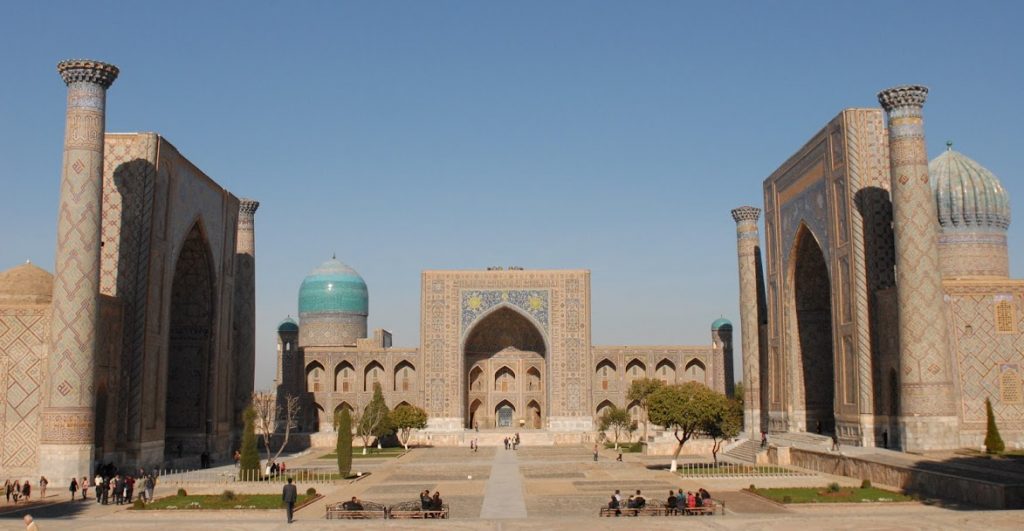 The Registan ©Maximum Exposure
The Registan ©Maximum Exposure
Kampir Tepe
The vast archeological site of Kampir Tepe sits on the right bank of the Amu Darya — the Oxus River of antiquity — which divides Uzbekistan from Afghanistan. Archaeologists have been digging here since the 1970s, and in summer 2019 finally unearthed enough evidence to announce convincingly that Kampir Tepe was none other than Alexandria on the Oxus, an ancient city built by Alexander the Great.
Tourists rarely come to remote Kampir Tepe, so those who do get to site to themselves. It’s like a Central Asian Pompeii: you can still walk the streets, enter rooms, and climb atop the city walls. It’s likely that the city was abandoned when the river changed its course, and each season the archaeologists are finding more of its secrets.
Yodgorlik Silk Factory
The name “Silk Road” wasn’t coined until the 19th century, though silk was undoubtedly one of the high value goods to travel along these ancient trading routes. Uzbekistan still produces some of the finest silks in the world, and the centre of production is Margilan in the Fergana Valley.
Silk has been made in Margilan at least since medieval times. At the Yodgorlik Silk Factory you can learn about the rearing of silk worms, and see the looms used to weave traditional silks. The zig-zag striped ikat design is unique to Uzbekistan, and the silk is used to create fabulous clothing and homeware. Some of this is for sale in the factory shop.
Yodgorlik Silk Factory ©Maximum Exposure
Ahsiket
The largest archeological site in the Fergana Valley, Ahsiket was founded between the 3rd and 2nd centuries BC. Its ruins are on the bank of the Syrdarya River, and when the city was at the height of its power, it was protected by a moat and a wall.
Like other similarly sized cities along the Silk Road, Ahsiket grew rich on the profits of trade. It had a palace, a mosque, and a large market, plus extensive quarters for artisans. The city’s wealth was to be its downfall, however. Genghis Khan set his sights on Ahsiket, and in 1219 his Mongol forces plundered and then destroyed the citadel. The city never recovered.
Old Termez
Termez is in the southernmost part of Uzbekistan, right on the border with Afghanistan. Historically it was a river port as well as the crossroad of overland trading routes.
The city is significant because in its numerous archeological sites you see that the Silk Road was not only a conduit for goods: ideas travelled along it, too. There’s evidence of Buddhism and Zoroastrianism being practised here, long before the arrival of Christianity and Islam. Termez Archeological Museum is the best in Uzbekistan, a treasure trove of priceless statues and coins, weapons, manuscripts, and more.
Kyr Kyz
Kyr Kyz means “40 girls” and the name refers to an ancient legend. A princess and 39 maidens were besieged inside a fortress. For 40 days and 40 nights, they fought off their attackers, but at a great price: only the princess was left standing, and she took on the remaining assailants one by one. Finally, she came face to face with their leader. He saw that the princess was mortally wounded, but he had such respect for her sacrifice that he retreated. The 40 girls all died but their fortress was saved.
The ruined mud brick building which carries the Kyr Kyz name still stands outside Termez. Archaeologists are unsure whether it was actually a fortress; it may have been an abbey or caravanserai instead. This by no means diminishes the wonder you feel when you stand inside the courtyard, nor does it detract from the the intriguing story of the Kyr Kyz and their tragic end.
***
As a Central Asia specialist, Paramount Journey is able to create bepoke itineraries which take you beyond Uzbekistan’s UNESCO World Heritage Sites to discover the lesser known treasures of the Silk Road. Many of the sites described in this blog are in remote locations; with our expert guides you’ll be able to understand the role they played in the world’s most famous and influential trade route. And the chances are that you’ll have them to yourself.







